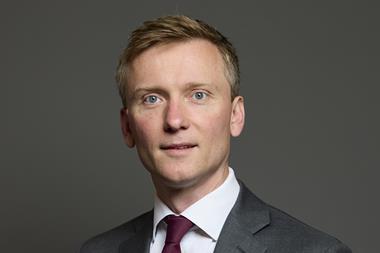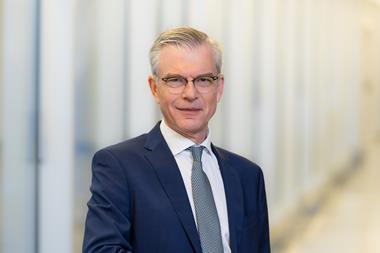While governments across Europe are pulling out all the stops to ensure working people are making enough provision for retirement, the dominant forms of non-state pension schemes vary from country to country. Besides corporate schemes and industry-wide schemes, professional schemes perform a vital role on the pensions stage, even though membership levels of individual schemes can be low.
In the UK, there are no real professional pension schemes, while in Iceland, schemes are mostly industry-wide rather than company-sponsored, and there are several professional schemes.
The fact that no employers are involved mean that professional pension schemes often have different concerns from, say, corporate schemes. Rene Bastian runs the Unie van Beroepspensioenfondsen (UvB), which looks after the interests of occupational funds for the professions in the Netherlands.
“The kind of challenges we have are a little different from the ones for the employers’ pension schemes,” he says.
There are several important changes on the horizon for these pensions providers. “Next year a new law comes into effect - the WVB - the law on obligatory pension schemes for professions, and with that law, something completely new will be introduced in the Netherlands that has to do with the obligatory character of pension schemes.”
The compulsory element is the result of a compromise in meeting the obligations of employers and employees, says Bastian, but in the case of the professional pension schemes, no employers are involved.
Lawmakers are requiring the pension schemes to check every five years to see if the members still want their scheme to be obligatory. “That is quite an important change of law, which will have an effect on us,” he says. “Every five years, we must prove the scheme is still wanted, and (the minister of social affairs) has fixed how we have to prove this.”
The schemes have to form a special union, and then that union will be polled; where 60% of the members of that union agree, the scheme will remain obligatory. When less that 60% of membership agree, the scheme will continue to be obligatory for a further two years at which point the union will be polled again.
So the task for the professional schemes is to organise a union within the next year. It has to be in place by 1 January 2007, says Bastian. He says there are some risks with polling as a way of determining the future of the pension schemes, but adds that after a long discussion, this was the form of acceptance that was put in place. It was thought to be the most indisputable way of determining whether the compulsion was agreed upon.
“They have to think of how to motivate people to join the union,” he says. “It’s really a challenge for us.” The pension schemes will have to change and also there will have to be more solidarity. The minister has stated that there should be a flat premium, no medical examination in advance and affordability.
By definition, this type of pension scheme represents a group of people who share the same profession, and patterns of retirement can vary according to job function. The nature of the work means that some professions generally retire earlier than others.
Pilots, for example, tend to retire earlier, and this is why some legislation in the Netherlands has particular importance for the BPL Beroeps Pensionsfonds Loodsen (Pilots Pension Fund).
The tax facilitated pension benefit for early retirement will affect the professional pension funds, says Ane Nauta, chairman of BPL. “Nowadays pilots retire at the age of 55, in years this will change to a flexible retirement age of 55 to 60 years old.
“The government strives for a uniform retirement age and has the intention to tax facilitate only the pension benefit from 65 years on, like the system that is available for employees,” he says. Because these changes will be a significant problem for many professional pension funds, the UvB will take the lead in finding a solution, he says.
Apart from this, the Pilots Pension Fund faces the problem of the ever-growing burden of regulation and reporting requirements. “The increasing amount of regulations, the unimpeded increase of supervisors - De Nederlandse Bank and Autoriteit Financiele Markten - and their thirst for more, and more frequent information, results in a increased workload especially for the smaller pension funds like the BPL,” says Nauta. The BPL has just 1,000 members.
“We are not against good supervision but it can be done more efficiently, thereby the costs of supervising has to be paid by the pension funds,” he says.
In Germany, the professional pension schemes for the liberal professions are only available for members of certain professional associations – Berufskammern. The professions included are physicians, pharmacists, architects, notaries, lawyers, tax consultants, vets, chartered accountants, dentists and psychotherapists.
The schemes form part of a compulsory pensions system within the first pillar of the social security system in Germany.
Michael Jung is director of the Arbeitsgemeinschaft Berufstaendischer Versorgungseinrichtungen (ABV), the organisation which covers the 79 professional pension schemes of the liberal professions in Germany.
He says the association expects the regulatory environment surrounding professional pension schemes in Germany to stay the same. “We trust the word of chancellor Angela Merkel who so far as always stressed that the CDU/CSU does not question the independent existent of professional pension provision,” says Jung.
“As far as future developments are concerned, we must wait to see the result of an investigation into changes in the mortality of our members, which we are conducting at the moment,” he says. Results of the investigation are not expected before the end of 2006.
“If, as a result of this investigation, it is established that there is another clear rise in life expectancy, then this would present challenges for the professional pension schemes – particularly against the background of the current low level of interest rates.
“Whether the dynamics of bond yields change in the near future, and if they do, to what extent – this depends largely on life expectancy and also on the medium-term outlook for interest rates.”
The legal and regulatory environment does not present any problems for the pension fund for solicitors in Lower Saxony, says Till Feder, chief investment officer at the Rechtsanwaltsversorgung Niedersachsen.
“The challenge at the moment for us is the Rechnungszins – the minimum return on fixed income bonds,” he says. “At the moment, it’s a bit difficult for us to earn that.” The current Rechnungszins is set at 2.7%.
On the investment front, the German professional pension schemes form part of the country’s first pillar pension provision and are obliged to comply with the same investment regulations that apply to private life insurance companies, says Michael Jung of the ABV.
This means that investment in professional pension schemes must be appropriately diversified in order to keep assets as safe as possible, and maintain profitability.
“In concrete terms, this mean that no one type of investment should dominate the asset mix – that is, not more than 50% of total assets may be invested in one asset class,” he says.
There are special regulations governing certain asset classes, he adds. For example, shares should not make up more than 35%.
In the Netherlands, where professional pension funds form part of second pillar pension provision, the only investment restrictions are those that apply to all pension funds. Capital adequacy ratios have to be adhered to, and any fund where capital levels fall below that required have to adjust their asset mix, according to the Dutch Central Bank.
In the Netherlands, the introduction of pension fund governance is another specific challenge facing professional pension schemes, says Rene Bastian.
“In 2006 the pension funds are expected to implement a form of pension fund governance,” he says. This will involve more specific supervision on the part of the board, and also probably mean the creation of a new structure.
“Pension fund governance has to bring more transparency and openness to what they do and certain decisions that they have made,” he says. To create that openness, several forms are possible, he says. There will have to be some kind of internal supervision and increased accountability. So a third organisation will have to come into being, and that is something new, he says.
Since the government is already requiring the professional schemes to form unions in order to poll their membership, the schemes could give these new unions a double function. “We as professional pension funds intend to combine that organisation… it gives added value, and is a natural combination of functions,” says Bastian.
In Italy, Marco Mensitieri of the pension fund for journalists, the Instituto Nazionale di Previdenza del Giornalisti Italiani (INPGI), says above all, the pension scheme has to be equal to the task of steering its investments.
“Our challenge… is common with all the professional funds in Europe,” he says, “ensuring sustainability taking into account the developments of the professional (domestic) market of reference.”
Related to this, is the need to define a more efficient process of investment, Mensitieri says. “We need for that adequate staffing, robust risk management and long-term committed boards to absorb the value that new classes of investment can offer.”
On a European scale, it is hard to say whether the legal environment supports professional pension funds or not, says Mensitieri. But there is perhaps scope for levelling the playing field where tax is concerned. “It seems to me, at any rate, that we are far from ensuring equal tax treatment among different kinds of investment and funds,” he says.
While large corporate schemes dominate the pensions scene in many European countries, Iceland is one state that has very few company-specific pension funds. “The funds are mainly industry-wide pension funds within certain sectors,” says Stefan Halldorsson, manager for the Engineers Pension Fund, Lifeyrissjodur Verkfraedinga.
So the bulk of schemes are not related to the income or balance sheets of particular companies. “They are more like defined benefit funds than defined contribution,” says Halldorsson. “Although some of the features make them hybrid types.”
The Engineers’ Pension Fund began as a pension fund for civil engineers, but 11 years ago, it opened up for university graduates from entirely different disciplines. The fund now counts among its members other types of self-employed professionals. “We have a number of people from certain professions, lawyers, for example, and quite a few people in the new biotech sector, except those that work for the state,” he says.
In Iceland, such pension funds are mandatory. “Union contracts stipulate you have to pay into a certain fund,” he says. “Then there’s a growing part of the population who do have a choice, because they don’t belong to a certain union. Certainly in the private sector, they can choose which fund they belong to.”
A number of these funds - mainly the local ones - are open-admission funds. This means there is competition between them. So the Engineers’ Pension Fund has to pay close attention to make sure that its pension product is competitive in comparison with those of other open-admission pension funds, says Halldorsson.
“Most of the mandatory funds are dealing with their pensions administration structure, which we do not have to deal with because we had the right structure to begin with,” he says. “So compared to other funds we are in a fairly promising situation.
“Our focus is on staying competitive, and the investment returns, which are always a challenge. In terms of the overall environment, we are in a fairly favourable position,” he says.
There has been a significant increase in disability liabilities, he says. The fund has the lowest disability ratio, and it has to protect this, says Halldorsson. “In the long run, it means higher benefits for the rest of our members.”
One regulatory aspect that the fund has to contend with is the solvency issue. In Icelandic law, funds must in general be fully funded, though it is acceptable for this to vary by 5% either way, which allows for fluctuations.
“If they exceed these ranges, then tLongevity is a factor for most pension funds in Iceland, and Halldorsson says it seems that it will become law that contributions are increased across the board.












No comments yet